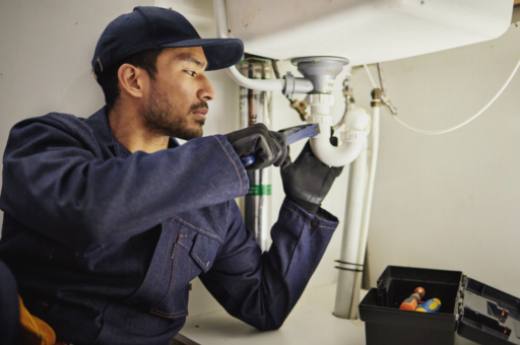Are you tired of dealing with clogged drains in your modern home? DIY drain cleaning can be a simple and cost-effective solution to keep your home clean and healthy. Understanding the basics of drain cleaning, choosing the right tools for the job, and knowing when to use natural or chemical cleaning options are essential for maintaining your home's plumbing system. In this article, we'll explore the step-by-step process of DIY drain cleaning, including preventative maintenance and how to tackle common drain issues. Whether you're a seasoned DIY enthusiast or a homeowner looking to save on professional plumbing services, this guide will help you keep your drains running smoothly.

Understanding the Basics of Drain Cleaning
Over time, debris, grease, and other substances can build up in your pipes, leading to clogs and potential damage. Understanding the basics of drain cleaning is essential for keeping your home in good condition and preventing costly plumbing issues.
Drain cleaning involves removing clogs and buildup from your pipes to ensure that water and waste can flow freely. This process may involve using a variety of tools and cleaning solutions, depending on the severity of the clog and the type of material causing the blockage. By understanding the basics of drain cleaning, you can take proactive steps to keep your home's plumbing in top shape.
Regular maintenance and cleaning of your drains can help prevent major clogs and costly repairs down the line. Additionally, keeping your drains clean can contribute to a healthier home environment by reducing the risk of mold, mildew, and unpleasant odors that can result from clogged or dirty pipes. With the right knowledge and tools, you can tackle drain cleaning with confidence and keep your home running smoothly.
Choosing the Right Tools for the Job
There are a variety of tools available for clearing clogged drains, and choosing the right ones can make the process much easier and more effective. Some essential tools for DIY drain cleaning include a plunger, drain snake, and drain auger. These tools are readily available at hardware stores and are relatively easy to use for tackling minor clogs. Additionally, having a pair of rubber gloves and a bucket on hand can also be useful for containing any messes and disposing of debris properly. It's important to have these tools readily available in your home for when clogs occur, as they can help you quickly and effectively address the issue without having to call in professional help.
Natural and Chemical Cleaning Options
When it comes to cleaning your drains, there are both natural and chemical options available to you. Natural options include using ingredients such as baking soda, vinegar, and hot water to break up clogs and deodorize your drains. On the other hand, chemical cleaners are designed to dissolve clogs and kill bacteria, but they can also be harsh on your pipes and the environment. It's important to weigh the pros and cons of each option before choosing the best method for your home.
Preventative Maintenance for Your Drains
One simple and effective way to maintain your drains is to regularly flush them with hot water. This can help prevent buildup of grease, soap scum, and other debris that can lead to clogs. Additionally, using a drain strainer in your sinks and tubs can help catch hair, food particles, and other debris before it has a chance to cause a clog.
Another important aspect of preventative maintenance is being mindful of what you put down your drains. Avoid pouring grease, oil, coffee grounds, and other substances down the drain as these can solidify and cause blockages. Similarly, be cautious about flushing items like paper towels, wet wipes, and feminine products down the toilet as these can also lead to clogs.
Finally, consider utilizing enzymatic cleaners on a monthly basis to help break down organic matter and keep your drains clear. These cleaners are safe for your plumbing and can help prevent the buildup of clogs over time. By following these preventative maintenance tips, you can help ensure that your drains stay clear and clog-free, leading to a cleaner and healthier home.
Tackling Common Drain Issues at Home
These issues are often caused by a buildup of hair, food particles, grease, and other debris that can accumulate over time. One of the most effective DIY solutions for tackling these common drain issues is using a plunger. A plunger can help to dislodge clogs and restore proper drainage in sinks and tubs. Additionally, using a plumbing snake can also be helpful in breaking up stubborn clogs and removing debris from pipes. It's important to use these tools carefully to avoid causing damage to the pipes. Regular maintenance, such as removing hair and debris from drains, can also help prevent common drain issues from occurring in the first place.
Professional Help: When to Call in the Experts
When it comes to maintaining a clean and healthy home, DIY drain cleaning can be a great way to keep your plumbing in top shape. However, there are times when it's best to call in the experts. Professional plumbers have the training, experience, and specialized tools to tackle tough clogs and stubborn drainage issues. If you've tried DIY methods and still can't seem to clear your drains, or if you notice any signs of more serious plumbing problems, it's time to call in the pros. Ignoring these issues can lead to costly water damage and potential health hazards, so it's important to address them as soon as possible. A professional plumber can accurately diagnose the issue and provide a lasting solution to keep your drains clean and clear.
